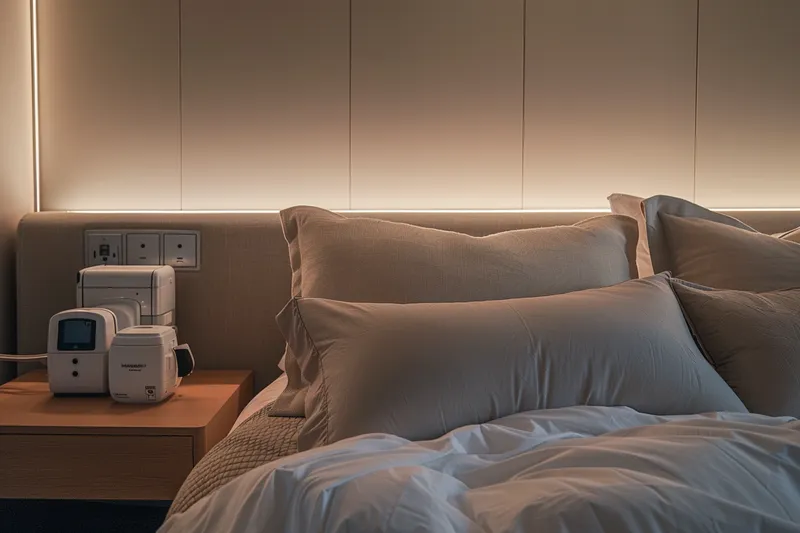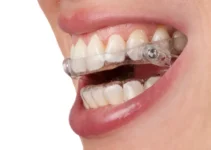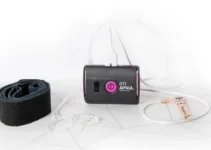Sleep apnea, a significant medical condition characterized by breathing interruptions during sleep, can lead to various health challenges, impacting daily life and performance. In the UK, individuals diagnosed with sleep apnea might be eligible for certain benefits designed to assist in managing their condition and maintaining quality of life. This article explores the different types of support available, including financial assistance, medical aids, and other governmental resources. By understanding what you’re entitled to, you are better positioned to navigate the complexities of health-related benefits and improve your overall well-being.
Understanding Sleep Apnea and Its Impact
What is Sleep Apnea?
Sleep apnea is a serious sleep disorder that occurs when a person’s breathing is interrupted during sleep. Individuals with untreated sleep apnea repeatedly stop breathing during their sleep, potentially hundreds of times. This means the brain—and the rest of the body—may not get enough oxygen. There are three main types of sleep apnea: obstructive sleep apnea (OSA), central sleep apnea (CSA), and complex sleep apnea syndrome. OSA, the most common form, is caused by a blockage of the airway, usually when the soft tissue in the back of the throat collapses during sleep.
Central sleep apnea, on the other hand, is not due to a blockage of the airway. Instead, it occurs because the brain fails to signal the muscles to breathe, often due to instability in the respiratory control center. Complex sleep apnea syndrome, also known as treatment-emergent central sleep apnea, occurs when someone has both obstructive and central sleep apnea.

It’s important to understand that sleep apnea is a chronic condition that can significantly impact your daily life and general health. Studies have shown that untreated sleep apnea can lead to serious health problems such as hypertension, heart disease, stroke, diabetes, and decreased overall quality of life. Recognizing the signs and seeking treatment is crucial for maintaining both physical and mental well-being.
Common Symptoms of Sleep Apnea
Sleep apnea is often accompanied by a variety of symptoms that can help in its identification. However, many symptoms of sleep apnea can be similar to other conditions, making it important to seek professional diagnosis. Some common symptoms include:
- Loud snoring: Perhaps the most well-known symptom of sleep apnea, loud snoring is often a sign of obstructed airways.
- Episodes of stopped breathing: Observed by another person, these episodes are central to the diagnosis of sleep apnea.
- Gasping for air during sleep: Individuals with sleep apnea may wake up suddenly, feeling short of breath, which can be very alarming.
- Daytime fatigue: Even if you think you’ve had a full night’s sleep, the interruptions can prevent you from reaching the deep sleep stages, causing significant daytime drowsiness and irritability.
- Difficulties with concentration: The lack of quality sleep can lead to decreased cognitive function, including problems with attention, memory, and decision-making.
If you or a loved one are experiencing these symptoms, it may be an indication of sleep apnea, and it’s important to consult with a healthcare provider for further evaluation and diagnosis.
How Sleep Apnea is Diagnosed
Diagnosing sleep apnea typically involves a comprehensive evaluation which can include a sleep history review, physical examination, and specialized testing. The process usually starts with a visit to a healthcare provider who will assess symptoms and medical history. If sleep apnea is suspected, further testing will be recommended. The gold standard for diagnosing sleep apnea is a sleep study, known as polysomnography. This is usually conducted in a sleep center, where various body functions such as brain activity, eye movement, muscle activity, heart rate, and respiratory effort are monitored throughout the night. These tests provide detailed information that helps in accurately diagnosing and determining the severity of sleep apnea.
In some cases, home sleep apnea tests (HSAT) can be used as a more convenient option. These portable monitoring systems can be used at home to diagnose obstructive sleep apnea. They generally measure airflow, breathing patterns, and blood oxygen levels, making them a practical alternative for initial screening.
Once diagnosed, treatment options can be discussed, which may include lifestyle changes, the use of continuous positive airway pressure (CPAP) devices, or even dental appliances specifically designed for sleep apnea treatment. Early diagnosis and intervention are key in managing sleep apnea effectively and improving quality of life.
Understanding sleep apnea and its effects is the first step toward addressing this potentially life-altering condition. By informing yourself and seeking appropriate medical advice, you can take control of your health and improve your overall well-being. Make sure to read our other articles for more information on treatment options and lifestyle changes to manage sleep apnea effectively.
Eligibility for Benefits in the UK
The UK provides a variety of financial supports to individuals who face difficulties due to health issues, disabilities, or other qualifying conditions. Understanding eligibility criteria and the specific benefits available is essential for ensuring that you receive the necessary support. These benefits include Personal Independence Payment (PIP), Employment and Support Allowance (ESA), and Disability Living Allowance (DLA).
Each of these benefits is designed to cater to different needs and circumstances. This article aims to shed light on the eligibility criteria for these benefits and how you can apply for them. Proper knowledge about these benefits can contribute significantly to enhancing the quality of life for those in need.
By exploring the details of each benefit, you can better understand which one may be the most suitable for your situation and how to navigate the application process. This ensures that you can access the support you are entitled to.
Personal Independence Payment (PIP)
Personal Independence Payment (PIP) is a benefit aimed at helping individuals with long-term health conditions or disabilities manage the extra costs of living. To be eligible for PIP, the condition must impact your daily living or mobility for at least three months, and you should expect these difficulties to continue for at least nine more months.
- Daily Living Component: This part of PIP is for those who need help with daily activities such as washing, dressing, or cooking.
- Mobility Component: This is for individuals who need assistance or have difficulty moving around.
PIP assessments focus on how your condition affects your ability to perform specific tasks rather than the condition itself. An independent healthcare professional evaluates your claim through a face-to-face consultation. The amount you receive depends on the severity of your condition and can help with the extra costs associated with your disability.
Employment and Support Allowance (ESA)
Employment and Support Allowance (ESA) offers financial support to individuals who are unable to work due to a disability or health condition. There are two main types of ESA: contributory ESA and income-related ESA. Eligibility for ESA often requires a medical assessment known as the Work Capability Assessment.
The Work Capability Assessment determines whether you have “Limited Capability for Work” (LCW) or “Limited Capability for Work-Related Activity” (LCWRA). Depending on the assessment outcome, you may be placed in one of two groups:
- Work-Related Activity Group: You will receive support to help you prepare for eventual work.
- Support Group: You will receive financial support with no mandatory work-related activities.
Understanding these categories and the application process can ensure you receive the financial assistance and support services you need to manage your condition.
Disability Living Allowance (DLA)
Disability Living Allowance (DLA) is designed to help with the extra costs of disability or long-term health conditions. Although DLA has largely been replaced by Personal Independence Payment (PIP) for adults, it remains available for children under 16 and for those who were already receiving it before the switch to PIP.
The DLA comprises two components:
- Care Component: For those who need help with personal care or supervision due to their disability.
- Mobility Component: For individuals who have walking difficulties or need help getting around.
Eligibility for DLA depends on the level of help needed and the length of time the condition has affected the individual. Applying for DLA requires a detailed explanation of how the condition impacts daily life and mobility, along with supporting medical evidence.
By understanding the eligibility criteria for these benefits, you can better navigate the application processes and access the necessary support. For more in-depth information on each benefit and other related topics, be sure to check out our other articles.
Application Process and Documentation
When pursuing treatment at a dental clinic for sleep apnoea, understanding the application process and necessary documentation is crucial for a successful diagnosis and treatment plan. This process ensures that all relevant medical history, current symptoms, and treatment preferences are thoroughly evaluated. Navigating this process properly will help both patients and dental professionals achieve the best possible outcomes.
Before diving into specific steps, it’s essential to recognize the role of personalized splints in treating sleep apnoea, especially for those who reject or cannot tolerate CPAP machines. This modern approach has made dental clinics a pivotal point for managing sleep apnoea cases.
Below, we’ll outline the key steps in the application process and the required documentation to ensure a smooth journey towards effective treatment.
Gathering Medical Evidence
One of the initial and crucial steps is gathering comprehensive medical evidence. This evidence forms the backbone of your diagnosis and guides the treatment plan. Given the direct relationship between bruxism, tooth wear, and sleep apnoea, it’s essential to collect a wide array of medical data. Key types of evidence include:
- Medical History: Thorough documentation of your medical history, particularly any history of sleep disorders, dental issues, or other related conditions.
- Previous Treatments: Records of past treatments you have tried, including CPAP usage and results.
- Diagnostic Tests: Results from sleep studies, polysomnography, or home sleep tests. These tests provide critical data on the severity of your sleep apnoea and patterns of breathing disturbance.
- Dental Records: Detailed records of your dental health, including any instances of bruxism or tooth wear.
Collecting this evidence not only aids in accurate diagnosis but also ensures a personalized approach to your treatment.
Filling Out the Application Form
Once you have gathered the necessary medical evidence, the next step is completing the application form. This form is a vital component in streamlining your treatment process and should be filled out with utmost accuracy.
The form typically includes sections where you will need to:
- Detail your *personal information* including contact details and identification.
- Provide a *comprehensive medical history*, highlighting any relevant conditions and previous treatments.
- List any *current medications* and supplements you are taking.
- Describe your *current symptoms* in detail, focusing on sleep disturbances, snoring, and any related dental issues.
- Attach or reference *diagnostic test results* you have gathered.
Accuracy in the form is critical as it forms the baseline for your initial consultation and ongoing treatment plan. Any discrepancies or omissions could potentially delay or complicate the treatment process.
Successfully navigating the application process and providing comprehensive documentation is the first step towards effective management of sleep apnoea at a dental clinic. For more insights on related topics, be sure to explore our other articles.
Common Questions about Claiming Benefits for Sleep Apnea in the UK
If you’re suffering from sleep apnea and are resident in the UK, understanding what benefits you can claim is crucial for managing your condition effectively. Here are some key questions and answers to help you navigate this aspect.
What types of benefits are available for someone with sleep apnea in the UK?
Individuals suffering from sleep apnea in the UK may be eligible for various benefits, depending on the severity of the condition and how it impacts their daily life. Common benefits include Personal Independence Payment (PIP), Employment and Support Allowance (ESA), and, in some severe cases, a Disability Living Allowance (DLA) for children under 16. These benefits are designed to help cover costs associated with medical care, mobility, and daily living adjustments.
How do I qualify for these benefits with sleep apnea?
Eligibility for benefits related to sleep apnea often revolves around how the condition affects your ability to work and perform daily activities. Medical evidence from your NHS doctor or a sleep specialist will be crucial. For PIP, your condition must be expected to last at least 12 months and affect your ability to perform daily tasks or mobility. The assessment may involve filling out a detailed questionnaire and possibly attending a face-to-face assessment. It’s advisable to discuss this with a GP or a practitioner who specializes in sleep disorders to get accurate advice and support.

My name is Salman Kapa, a 73-year-old expert in bone regeneration and dental implantology. With decades of experience in the field, I am dedicated to advancing our understanding of oral health and hygiene. Through my research and writing, I aim to contribute to the development of innovative solutions in dental care.




